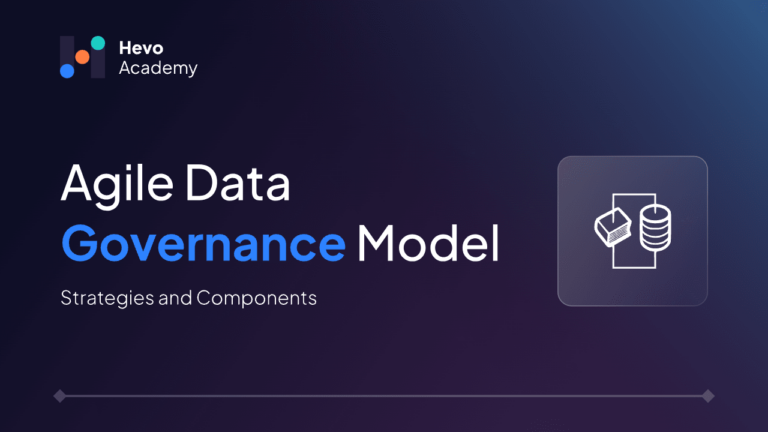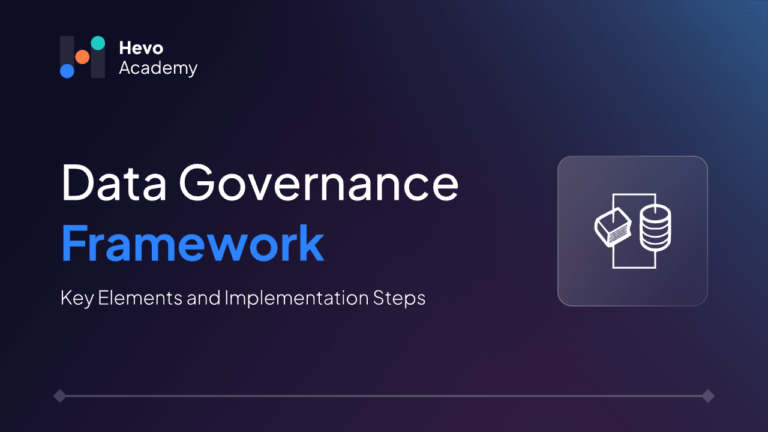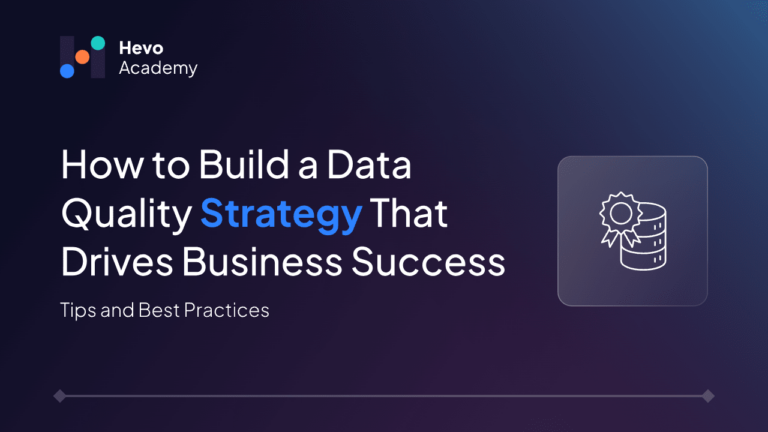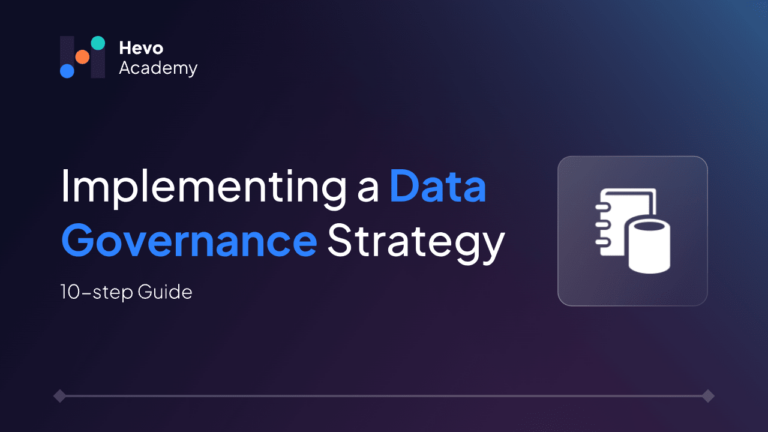In the present business world where data is considered an important asset, it becomes vital to have proper data governance so that the data is of good quality, secure, and legal. It has been realized that traditional governance frameworks are very rigid and slow when it comes to decision-making, hence preventing innovation.
Table of Contents
The Agile Data Governance model introduces dynamic methods that can be adjusted gradually while ensuring compliance and fostering innovation. This blog discusses the issues with the conventional form of governance, opportunities offered by Agile Data Governance, and some ideas for the proper adoption of this innovative model.
What is Agile Data Governance?
Agile Data Governance is thus a faster and more dynamic method of governing data that eliminates flaws associated with conventional top-bottom data governance. It is based on the Agile process, which can be defined as an iterative, people-centric, flexible approach focused on continuous improvement of the data in the organization.
Challenges of Traditional Data Governance Models

How Agile Data Governance Solves Traditional Challenges
- Faster Decision-Making: Agile Data Governance transfers decision-making power from gatekeepers to teams, avoiding unnecessary bottlenecks. Since iterative processes incorporate feedback at various steps, organizations are able to make quick adjustments to the governance policies eliminating time wastage in the decision-making process.
- Flexibility: The Agile Data Governance framework allows organizations to adapt their requirements over time and integrate these changes into their strategy. Compared to traditional models, it is nonetheless better positioned to adapt to new data sources, technologies, and regulations on the fly.
- Cost Efficiency: Agile Data Governance thus combines automation and lean to decrease the overhead of big governance teams. Automation while classifying data, automating audit trails, and automating policy enforcement will also reduce costs considerably and make things easier.
- Improved Collaboration: It establishes the cross-organizational data structure since no more functional silos exist in the company, including IT and other business units, who need to understand the policies of governance. Everybody is a winner because there is improvement in data quality, clear visibility and utilization in the other departments.
- Regulatory Compliance: Compliance risk can also be readily managed by Agile Data Governance, which entails developing compliance as an ongoing affair. This approach allows for the continuous modification of policies through iterative cycles, ensuring compliance with regulations and enhancing governance efficiency.
Hevo’s no-code data integration platform empowers organizations to implement flexible and scalable governance practices, ensuring compliance without slowing down data operations.
Why Choose Hevo?
- Simplified Data Access Control: Manage permissions effortlessly across teams.
- Data Quality Monitoring: Ensure consistency and accuracy with automated quality checks.
- Scalable Governance: Adapt governance policies in real-time to match evolving data needs.
Accelerate your data governance strategy while maintaining control with Hevo’s agile, no-code platform.
Get Started with Hevo for FreeEvolution of Agile Data Governance
Agile Data Governance was developed from Agile software development and is characterized by flexibility, iteration, and the integration of other aspects. In contrast to structured and fixed conventional models, it relies on a sequence of planning, executing, and evaluating while cycling through these steps in light of the dynamics of business and technological requirements. Teams are the custodians of important information: leadership shifts from micro-management to enablement. The emphasis is on the protection of business value within high-quality data and also the achievement of flexibility and scalability of governance processes. An agile approach to data governance must balance data governance principles and data quality objectives, as both are essential for maintaining reliable and compliant data assets.
Components of the Agile Data Governance Model
Agile Data Governance comprises the following elements that form the foundation for a flexible system of management of data.
Data Governance Framework
In Agile Data Governance, the framework is supposed to be flexible, and subject to changes and updates. It should not be too bulky but contain an outline of ‘rules of thumb’ that should be adhered to.
Key aspects of an Agile Data Governance framework include:
- Decentralized Governance: Enabling them to control their data and at the same time follow the organization’s data governance philosophy.
- Iterative Improvement: Update: fine-tuning the governance policies that relate to the feedback as well as new requirements.
- Risk Management: The governance lifecycle is a continuous process that prioritizes data security, privacy, and compliance.
- Avoiding Mistakes: Avoiding common data governance mistakes is crucial, especially in an agile governance framework where flexibility is prioritized, as mistakes can hinder efficiency and lead to compliance risks.
Automation
Automation is one of the key topics in Agile Data Governance. It decreases the number of manual interventions to enforce governance policies and procedures. It can also help achieve certain governance tasks, such as data classification, auditing, policy enforcement, etc., making governance a better process by reducing costs and time.
Examples of automation in Agile Data Governance include:
- Automated Data Classification: Machine learning is another technique for measuring and categorizing data based on identified criteria.
- Automated Policy Enforcement: Data governance policies are continuously being adhered to regardless of certain definable bounds within the organization without the need for further activeness.
- Real-Time Monitoring: Constantly monitor data usage on operations, quality, and compliance to determine problems ahead of time.
Collaboration Framework
The cooperation framework is a key element for ADG because it targets cooperation with other stakeholders of IT, business units, etc. Agile governance also promotes ‘ownership’ of data in the context where many are involved in the creation, processing, analysis, and use of data.
Key elements of a collaboration framework include:
- Cross-Functional Teams: The involvement of all organizational stakeholders from different departments for the centralized management of data.
- Clear Communication Channels: Cohesion of communication channels between the different teams is essential to maintaining harmony and the goals of governance.
- Shared Responsibility: Promoting the modified ownership model of data quality and governance in terms of the involved employees’ responsibilities.
Metrics
To ensure progress, data governance must be evaluated and monitored to determine areas of success and failure. When it comes to measuring the success of governance initiatives and improvement areas, Agile Data Governance makes use of the following metrics:
- Data Quality Metrics: Measuring the degree of accuracy of the data, degree of completion, consistency, and degree of reliability. Integrating data quality metrics into agile data governance allows organizations to ensure data integrity without sacrificing the speed and flexibility of agile methods.
- Compliance Metrics: Monitoring compliance with data privacy and security standards.
- Data Usage Metrics: Evaluating how data is being utilized across the organization to check and ensure that the governance policies are adhered to.
- Time to Insight: Determining the time it takes for the teams to obtain and analyze data for decision-making.
Further, it is suggested that there should be a commitment to learning for the data teams, which will help ensure that the teams are up to date with the current practices in data governance.
Why Do You Need an Agile Data Governance Model?
Modern organizations have to deal with increasing amounts of data and new complicated regulations. Agile Data Governance is crucial because of its positive attributes such as flexibility and ability to respond to change, time-to-market flexibility, constant compliance, the center of excellence for collaboration, and cost savings from automation and cycle time reduction.
Best Practices to Set Up Agile Data Governance Model (with Practical Applications)
People
- Build Cross-Functional Teams: Effective management requires the formation of groups drawn from IT, business units, and especially from the compliance teams.
- Practical Application: Organize the Data stewardship by creating a committee that would oversee its governance and ensure the cooperation of departments.
Process
- Adopt Iterative Practices: Use adaptive and cyclical (iterative) approaches aimed at ongoing process development.
- Practical Application: For governance duties, Scrum or Kanban boards should be employed to use feedback in the process.
Tools
- Leverage Automation: Use applications for classification, enforcement of policies, and real-time monitoring.
- Practical Application: Use Data Cataloging tools and Automated Compliance Software to lessen the burden of work in the governance area.
Measure
- Track Key Metrics: All the data used are checked for compliance and quality to determine the efficiency of the applied governance measures.
- Practical Application: It is recommended to use different tools such as Dashboards (for example, Power BI, Tableau) for tracking different metrics including data accuracy and compliance.
Conclusion
The Agile Data Governance model describes one of the most drastic deviations from the conventional approaches based on top-down strategies. It thus overcomes the challenges that come with the traditional governance model to enable flexibility, collaboration, and continuous improvement in managing data while at the same time ensuring compliance and use.
Agile Data Governance is therefore best executed through a strategic plan where cross-functional teams are utilized, processes are constantly reviewed and improved, automation is applied and a constant measurement of success is implemented. The benefits of Agile Data Governance allow organizations to be more prepared for the challenges of today’s fast-paced, data-centric environment.
FAQs
1. What is the key difference between traditional and Agile Data Governance?
In the traditional approach, the government is authoritative and bureaucratic exercising hierarchical control. Unlike a traditional approach to data governance, Agile Data Governance is more cyclical and allows teams to make decisions faster while still adhering to governance best practices.
2. How does Agile Data Governance improve compliance?
Agile Data Governance creates compliance as continuous because regulatory compliance is introduced in consecutive cycles; it is simple to revise the set of regulations and bring new ones.
3. What tools are essential for Agile Data Governance?
Typical solutions applied to Agile Data Governance are the automation tools for classification, policy, and compliance management as well as data cataloging and metadata management.
4. Why is collaboration important in Agile Data Governance?
Coordination is important because it eliminates data compartmentalization and makes everyone involved aware of the governance policies hence improving on aspects of quality and security of data.
5. How can organizations then ascertain the success of Agile Data Governance?
That success can be indicated by the improvement in data quality, compliance measures in the organization as well as the time taken to arrive at a particular conclusion. Studies of these metrics can be conducted frequently, and this assists in making appropriate adjustments and also checking if governance practices suit the business agenda.







